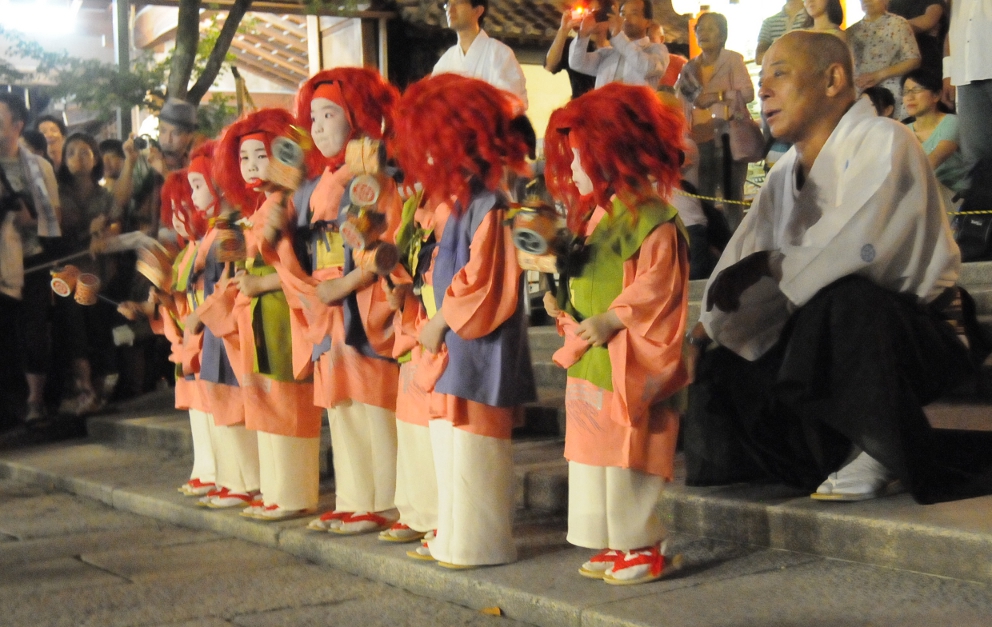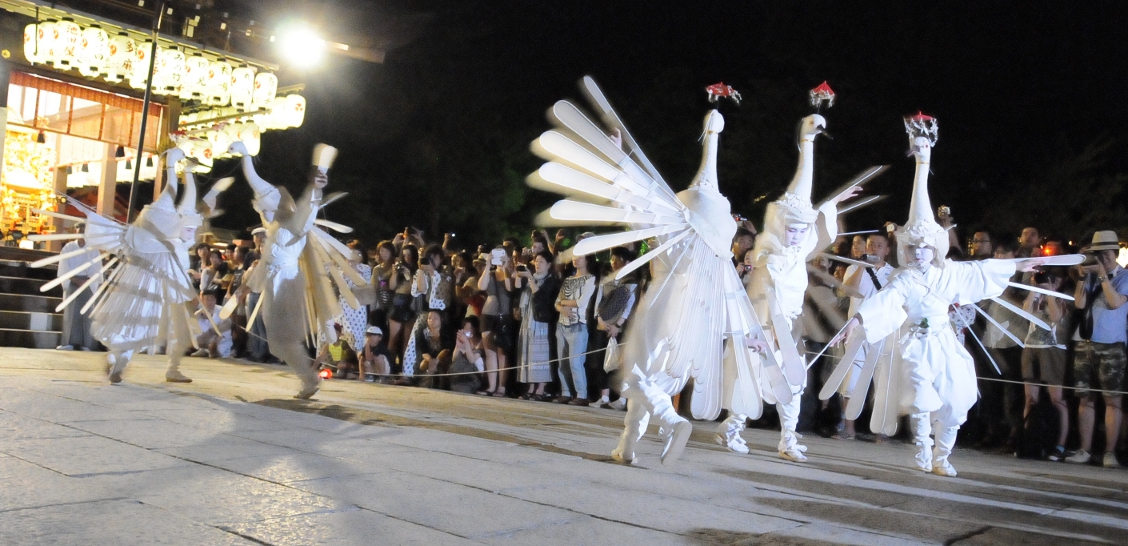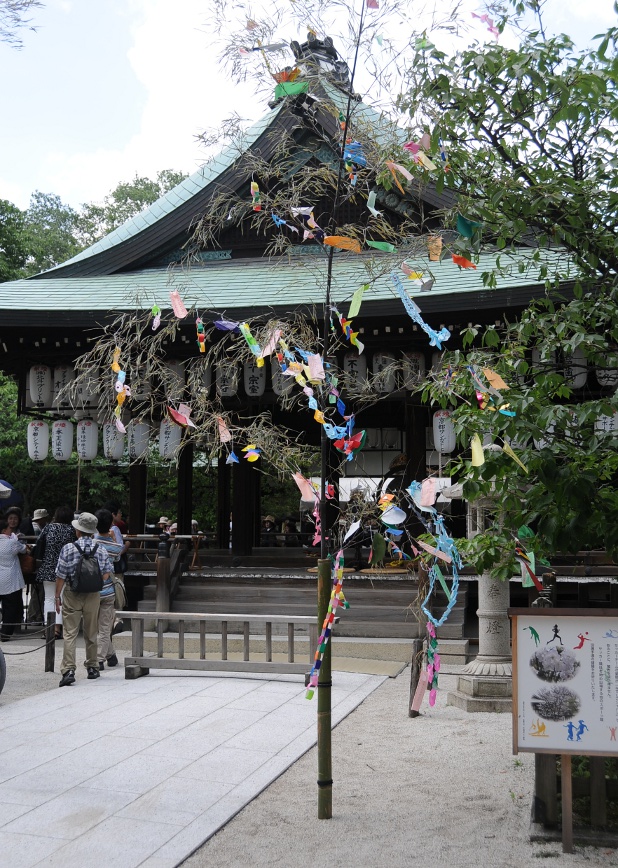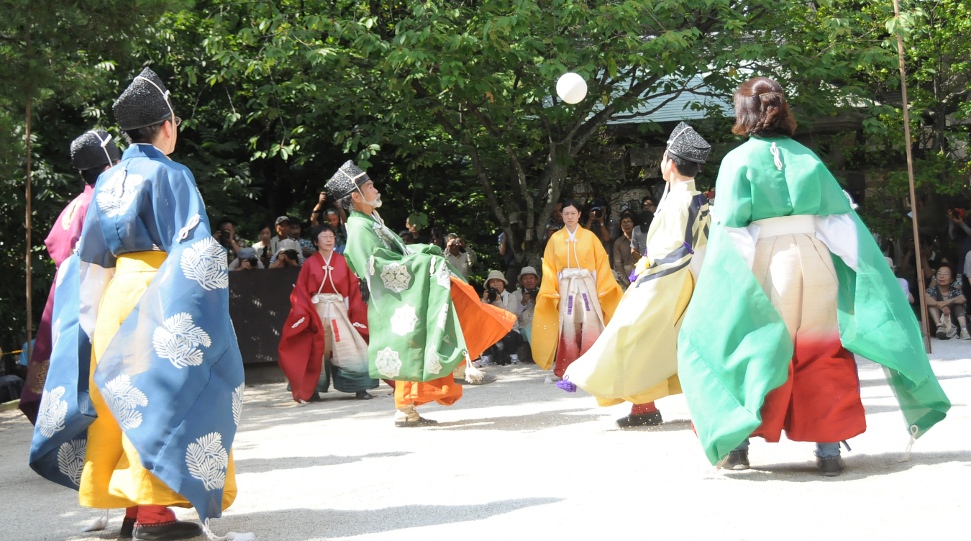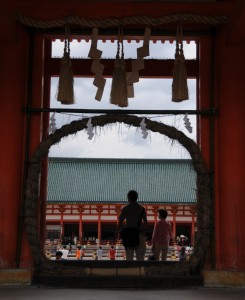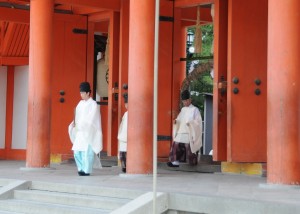Gion matsuri is one of the three greatest local festivals in Japan, together with the Kanda matsuri in Tokyo and the Tenjin matsuri in Osaka, but it is said to be the largest and gayest of the three. It is also one of the three most important ones in Kyoto, together with the Aoi matsuri and the Jidai matsuri. It starts on July 1st and ends on July 31st, and there are many different events taking place throughout the month and throughout the neighborhood of Gion and the inner city. The two most important events take place on July 10th and 17th.
Gion matsuri is the festival associated with Gion shrine, the old name of Yasaka shrine. It started in 869, when the country was stricken with a plague and the emperor dispatched his messenger to Gion shrine for pray for the end of the plague. The brother of the sun goddess is inshrined at Yasaka, and in order to relieve the sick, his spirit was carried, in little portable shrines, through Kyoto. As this proved successful to end the plague, this ritual is still performed today.
July 10th is the day of Mikoshi Arai Purification, a purification rite in which the Mikoshi, a small portable shrine in which the principle deity will be transported, is taken to the river and cleansed with water from the Kamo. The preparations are extensive, and the whole ceremony takes several hours.
First there is the Omukae Chochin, a procession of children dressed in various costumes and accompanying adults with lanterns and musicians playing flutes and drums, which leaves Yasaka shrine at 4:30 pm. They welcome the other procession of the Mikoshi later on.
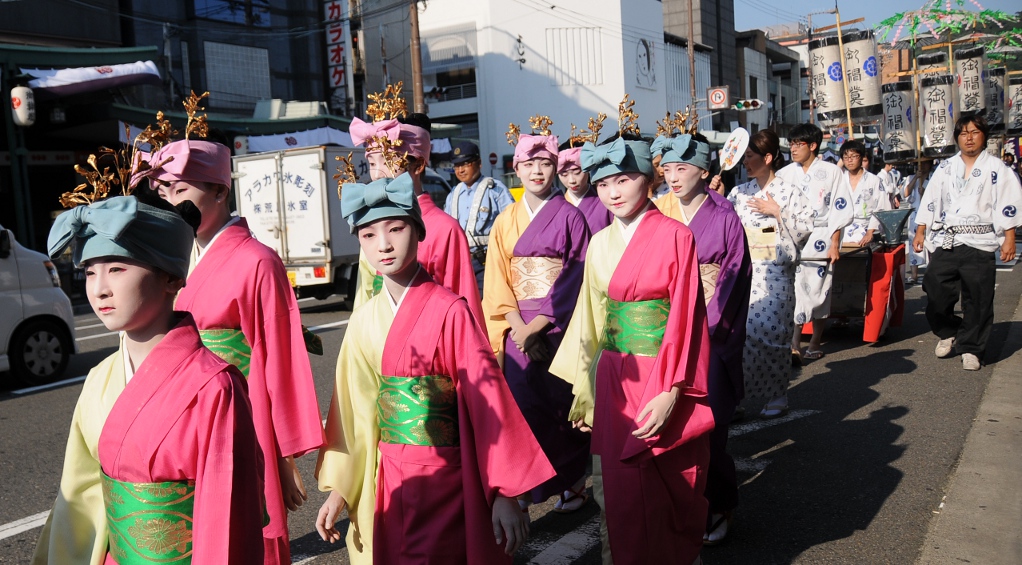 After a break, at 7 pm, a second procession leaves the shrine, goes to the river, and then returns to the shrine again. It consists of young men dressed in traditional white clothes, Happi, carrying an enormous torch with them, the fire and smoke of which is meant to cleanse the path for the Mikoshi.
After a break, at 7 pm, a second procession leaves the shrine, goes to the river, and then returns to the shrine again. It consists of young men dressed in traditional white clothes, Happi, carrying an enormous torch with them, the fire and smoke of which is meant to cleanse the path for the Mikoshi.
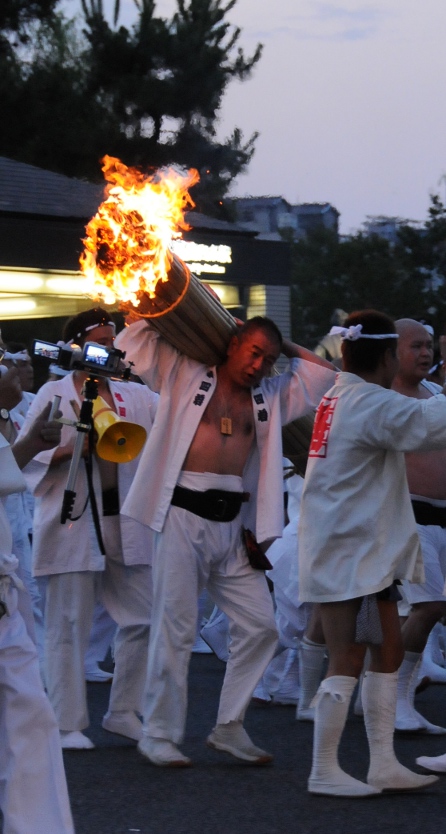 This portable shrine, fastened onto long, heavy wooden beams is carried on the shoulders of the same young men to the river in the final and largest procession of the day. Two or three of the same massive torches as before are carried in front and at the end of the procession, in the middle of which is the Mikoshi. Here, the men are shouting, rhythmically encouraging each other to greater efforts. At times they stop and the men carrying the Mikoshi start jumping up and down, rocking the little shrine, and then, as a final move they lift it up high over their heads.
This portable shrine, fastened onto long, heavy wooden beams is carried on the shoulders of the same young men to the river in the final and largest procession of the day. Two or three of the same massive torches as before are carried in front and at the end of the procession, in the middle of which is the Mikoshi. Here, the men are shouting, rhythmically encouraging each other to greater efforts. At times they stop and the men carrying the Mikoshi start jumping up and down, rocking the little shrine, and then, as a final move they lift it up high over their heads.
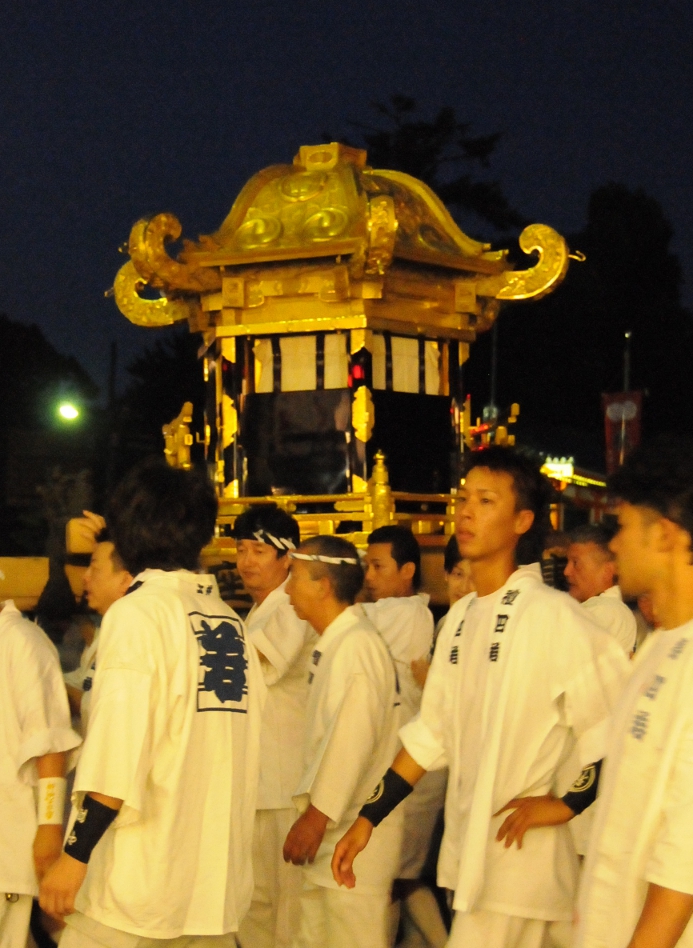 When they – now merged with the childrens’ procession of the afternoon – arrive back at the shrine, the Mikoshi, after circling the centre stage and being lifted and rocked one last time, is then placed onto the platform of the stage at the centre of the shrine and covered again with gold cloth, metal mirrors, and red rope.
When they – now merged with the childrens’ procession of the afternoon – arrive back at the shrine, the Mikoshi, after circling the centre stage and being lifted and rocked one last time, is then placed onto the platform of the stage at the centre of the shrine and covered again with gold cloth, metal mirrors, and red rope.
 Meanwhile, there are dances performed by the four groups of children that walked in the afternoon procession. In the picture below, the little ones with the red wigs are between three and five years old, and the boys dressed as swans are six. The whole ceremony was finished and the Mikoshi redressed in its usual golden splendor at around 10 pm. Once again I am sorry that I neither understand the details of the ceremony, nor the significance of the costumes or the dances. But then again, I wonder how many of the Japanese spectators do.
Meanwhile, there are dances performed by the four groups of children that walked in the afternoon procession. In the picture below, the little ones with the red wigs are between three and five years old, and the boys dressed as swans are six. The whole ceremony was finished and the Mikoshi redressed in its usual golden splendor at around 10 pm. Once again I am sorry that I neither understand the details of the ceremony, nor the significance of the costumes or the dances. But then again, I wonder how many of the Japanese spectators do.

